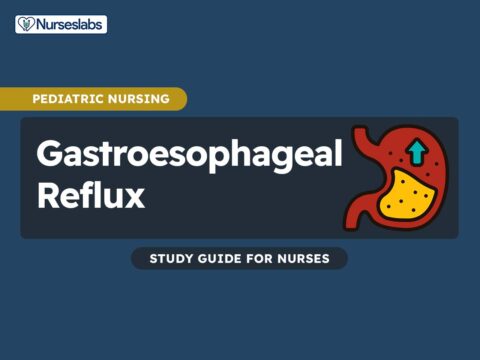Infants are dependent on caregivers to meet their needs; if there is a disturbance in the relationship between the caregiver and the infant, psychosocial issues can lead to physical concerns in the patient.
Non-Organic Failure to Thrive (NOFTT) is a condition in infants and young children characterized by inadequate growth and development, not caused by any underlying medical or organic issues. Instead, it results from a complex interplay of environmental, psychosocial, and nutritional factors that impede normal growth. Children with NOFTT typically show poor weight gain, height, and developmental progress, often falling below the expected growth percentiles for their age.
Understanding the essentials of NOFTT is needed to effectively identify and address the underlying causes, optimize nutrition, and foster a supportive environment for affected children to thrive and reach their full developmental potential.
What is Non-Organic Failure to Thrive?
Four principal factors are necessary for human growth: food, rest and activity, adequate secretion of hormones, and a satisfactory relationship with a caregiver or nurturing person who provides consistent, loving human contact and stimulation.
- Infants who fail to gain weight and who show signs of delayed development are classified as failure-to-thrive infants.
- Failure to thrive has been defined in a number of ways, but most definitions include a weight less than the 5th percentile on the growth chart or a decreasing rate of weight gain.
Classification
Failure to thrive can be divided into two classifications:
- Organic failure to thrive. Organic failure to thrive is a result of a disease condition.
- Non-organic failure to thrive. Non-organic failure to thrive has no apparent physical cause.
Pathophysiology
Non-organic failure to thrive is often the result of interacting medical, behavioral, developmental, and psychosocial factors.
- A child is said to have failure to thrive when they don’t meet recognized standards of growth; it is not a disease or disorder.
- Instead, it describes a situation in which a child is undernourished and either doesn’t receive or is unable to process enough calories.
- The doctor determines a child’s ideal weight by comparing their weight, age, and gender to national averages.
- Children who fail to thrive usually fall well below their ideal weight.
- A child may also be diagnosed with failure to thrive if their growth rate in terms of height stalls when it should be on an upward trend.
Statistics and Incidences
The statistics of non-organic failure to thrive include:
- Up to 80% of children with growth failure do not have an apparent growth-inhibiting disorder, growth failure occurs because of environmental neglect, stimulus deprivation, or both.
- In the United States, it is seen in 5 to 10 percent of children in primary care settings, and in 3 to 5 percent in hospital settings.
- The prevalence of failure to thrive depends mainly on the definition being used and the demographics of the population being studied, with higher rates occurring in economically disadvantaged rural and urban areas.
- Approximately 80% of children with failure to thrive present before 18 months of age.
Causes
A number of factors can cause failure to thrive, including:
- Not enough food is offered. Incorrect formula measurement, breastfeeding problems, problems with transitioning to solid foods, restricted fat intake, and financial constraints mostly cause failure to thrive.
- The child eats too little. Some children have trouble eating enough food because of prematurity, developmental delays, or conditions like autism.
- Health problems involving the digestive system. Several health conditions can prevent a child from gaining weight.
- Food intolerance. Food intolerance means the body is sensitive to certain foods.
- An ongoing illness/disorder. A child who has trouble eating may not take in enough calories to support normal growth.
- Infections. Parasites, urinary tract infections, tuberculosis, and other infections can force the body to use nutrients rapidly and decrease appetite.
- Metabolic disorders. Metabolic disorders are health conditions that make it hard for the body to break down, process, or take energy from food.
Clinical Manifestations
Infants with non-organic failure to thrive exhibit the following:
- No weight gain. Lack of weight gain is a common manifestation of failure to thrive.
- Developmental delays. Delays in reaching developmental milestones, such as rolling over, crawling, and talking cannot be achieved on time.
- Poor muscle tone. Infants with non-organic failure to thrive have poor muscle tone and a loss of subcutaneous fat.
- Immobility. They are immobile for long periods of time due to a lack of energy.
- Unresponsive. They may be unresponsive or actually try to avoid cuddling and vocalization.
- Irritable. Children with failure to thrive often fall into the classification of “difficult” or irritable babies, but others may be listless and passive and do not seem o care about feedings.
Assessment and Diagnostic Findings
To confirm the diagnosis of non-organic failure to thrive, the following are used:
- Growth charts. Doctors use standard growth charts to plot weight, length, and head circumference, which are measured at each well-child exam.
- Health history. To see if there’s a problem, doctors will ask for a child’s detailed health history, including a feeding history.
- Physical exam. Signs of deprivation are important elements in the diagnosis; when the child begins to improve in a nurturing environment, the diagnosis is confirmed.
- Laboratory tests. If a thorough history or physical examination does not indicate a particular cause, most experts recommend limiting screening tests to CBC with differential, ESR, BUN, serum creatinine, electrolyte levels, urinalysis and culture, and stool for pH, reducing substances, odor, color, consistency, and fat content.
Medical Management
Treatment of failure to thrive is aimed at providing sufficient health and environmental resources to promote satisfactory growth,
- Nutritional treatment. Eliminate empty calories from items, schedule regular meals and snacks, usually 3 meals and 2 snacks, offer solids before liquids, consider fortifying calories with extra oils and carbs, increase protein, and consider vitamin and/or mineral supplements, especially zinc and iron.
- Psychosocial evaluation. Psycho social evaluation must be detailed and must provide an in-depth look at the functioning of the family and the child in the context of the family.
Nursing Management
Treatment initially depends almost entirely on good nursing care.
Nursing Assessment
Routine assessment is needed in order to identify potential problems.
- Physical exam. Conduct a careful physical exam of the child, including observing skin turgor, anterior fontanel, signs of emaciation, weight, temperature, apical pulse, respirations, responsiveness, listlessness, and irritability.
- Interaction. When interviewing the family caregiver, carefully observe the interaction between the caregiver and the child and note the caregiver’s responsiveness to the child’s needs and the child’s response to the caregiver.
- History. Take a careful history of feeding and sleeping patterns or problems.
Nursing Diagnosis
Based on the assessment data, the major nursing diagnoses are:
- Disturbed sensory perception related to insufficient nurturing.
- Imbalanced nutrition: Less than body requirements related to inadequate intake of calories.
- Deficient fluid volume related to inadequate oral intake.
- Impaired urinary elimination related to decreased fluid intake.
- Constipation related to dehydration.
- Risk for impaired skin integrity related to malnourishment.
- Impaired parenting related to lack of knowledge and confidence in parenting skills.
Nursing Care Planning and Goals
The major nursing goals for the patient are:
- Improve alertness and responsiveness.
- Increase caloric and oral fluid intake.
- Maintain normal urinary and bowel elimination.
- Maintain skin integrity.
- Improve parenting skills and build parental confidence.
Nursing Interventions
These interventions address general concerns related to nutritional deficits in the hospital or home setting.
- Provide sensory stimulation. Attempt to cuddle the child and talk to him or her in a warm, soothing tone and allow for play activities appropriate for the child’s age.
- Maintain adequate nutrition and fluid intake. Feed the child slowly and carefully in a quiet environment; during feeding, the child might be closely snuggled and gently rocked; it may be necessary to feed the child every 2 to 3 hours initially.
- Postfeeding instructions. Burp the child frequently during and at the end of each feeding, and then place him or her on the side with the head slightly elevated or held in a chest-to-chest position.
- Participation of caregiver. If a family caregiver is present, encourage him or her to become involved in the child’s feedings.
- Document the intake. Carefully document food intake with caloric intake and strict intake and output records.
- Monitor elimination patterns. As food and fluids are gradually increased and the child becomes hydrated, bowel activity and urine production return to normal.
- Promoting skin integrity. Lanolin or A and D ointment can be used to lubricate dry skin; apply the ointment at least once each shift and turn the child at least every 2 hours.
- Providing family teaching. While caring for the child, point out to the caregiver the child’s development and responsiveness, noting and praising any positive parenting behaviors the caregiver displays.
Evaluation
After the implementation of the care plan, evaluation includes:
- Improved alertness and responsiveness.
- Increased caloric and oral fluid intake.
- Maintained normal urinary and bowel elimination.
- Maintained skin integrity.
- Improved parenting skills and build parental confidence.
Documentation Guidelines
Documentation for a patient with failure to thrive includes:
- Individual findings, noting specific deficitss and associated symptoms, perceptions of client/SOs.
- Caloric intake.
- Individual cultural or religious restrictions, and personal preferences.
- Degree of fluid deficit and current sources of fluid intake.
- I&O, fluid balance, changes in weight, presence of edema, urine specific gravity, and vital signs.
- Results of diagnostic studies.
- Parenting skill level, deviations from normal parenting expectations, family makeup, and developmental stages.
- Availability and use of support systems and community resources.
- Plan of care.
- Teaching plan.
- Responsiveness to interventions, teaching, and actions performed.
- Attainment or progress toward desired outcomes.
- Modifications to plan of care.





































Leave a Comment